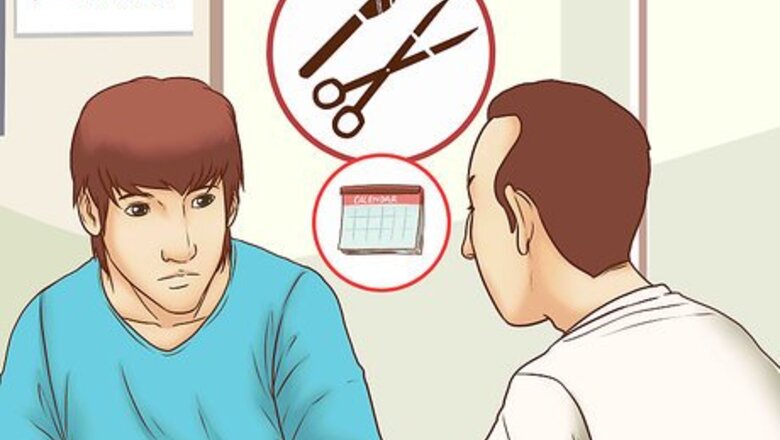
views
Preparing for the C-Section
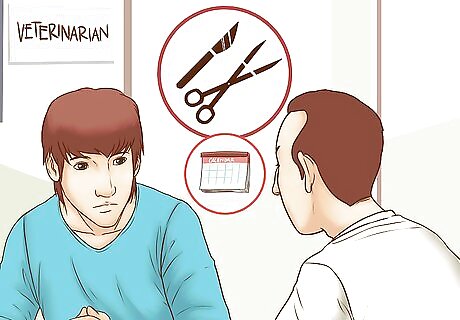
Schedule an initial appointment. An appointment will allow you and your vet to talk about a potential C-section. This will give your vet the opportunity to provide you with basic information. You'll also have the ability to ask questions. This appointment may be made several weeks after you've confirmed pregnancy or a few weeks before the due date -- depending on circumstances and potential complications. If the vet identifies any potential complications, they may suggest a C-section. The vet will discuss dangers associated with C-section. As with all surgeries, in rare instances, C-section may result in severe complications such as infection, problems with anesthesia, or even death.
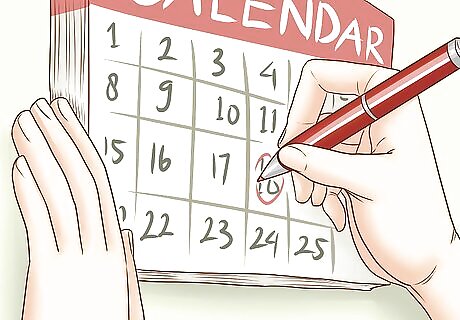
Set a date for the C-section. If you decide on a C-section, the vet will schedule a time for the procedure. This should be carefully timed as to be the best for the mother and puppies. Avoid pressuring the vet to schedule the procedure so it will be convenient for you. Your vet will likely plan the procedure for the due date or day after the due date. It is very unlikely that the vet will ever schedule a C-section for before the due date. The cost of a C-section during normal business hours may range from $500 to $2000, depending on region, complications, and other factors.

Withhold food and water. As with other procedures that require anesthesia, you need to stop feeding your dog in anticipation of surgery. This is important as a full stomach may create complications that could endanger your dog’s health. Withhold food for at least twelve hours. Don’t allow your dog to drink water for four hours before surgery. Anesthesia may cause nausea which might cause your dog to vomit -- a complication that is easily avoided by withholding food and water.
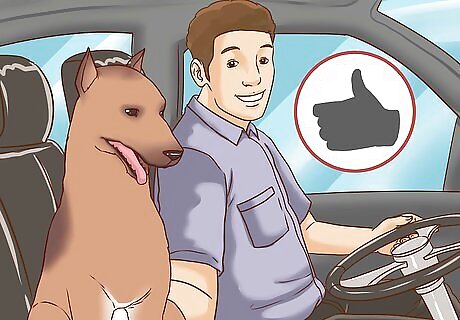
Bring your dog to the vet on the day of surgery. The trip to the vet on the day of surgery is very important. Ultimately, you want to make sure your dog is calm and in good spirits. Act very calm around your dog. Try not to act hurried or anxious when preparing to take her to the vet. Say things like “good dog” or “good girl!” Avoid letting her jump into the vehicle. If possible, have two people lift your dog into your vehicle. You don’t want to apply pressure to her belly.
Providing Care and Preventing Problems
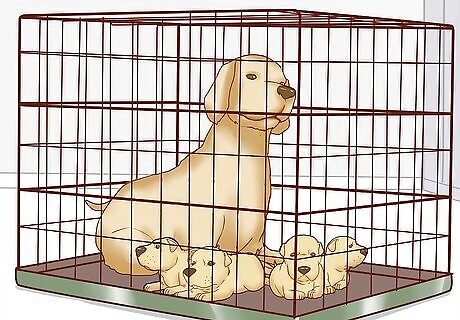
Restrict the mother’s activity. The first thing you need to do when you bring your dog home from the vet after surgery is to restrict her movement. Do not allow her to run or play rough. Ultimately, excessive activity may dislodge or tear the stitches holding the incision together. Most mother dogs should be kept with their puppies in a small crate or other confined area. Make sure to leash-walk your dog instead of allowing her to walk freely.
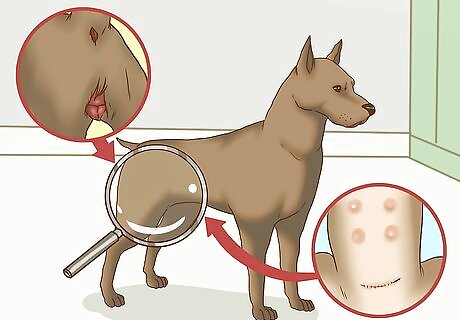
Observe your dog. Perhaps the most important aspect of home care is watching your dog to make sure she is recovering in the days and weeks after the surgery. Ultimately, identifying problems early is the best way to ensure that your dog makes a quick recovery. Know that limited vaginal discharge is normal for several weeks after C-section. Watch the area of incision for signs of swelling, discharge, or infection. Make sure your dog is eating and drinking plenty of water.
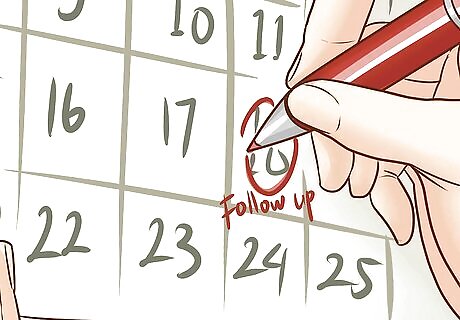
Schedule a follow-up appointment. You should also schedule a follow-up visit for your vet to examine your dog after the C-section. This will allow your vet the ability to make sure your dog is on track to heal properly. However, the vet will most likely schedule your follow-up appointment on the same day the C-section is performed. Additionally, see your vet a week or two after the C-section. See your vet if they instruct you to see them earlier than the scheduled appointment.
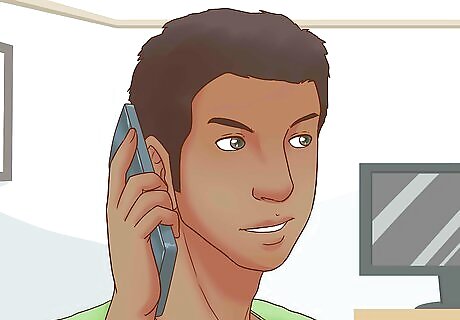
Contact your vet if you notice problems. Move up your follow-up visit if you believe your dog is not healing and improving in health after the surgery. This is important, as your dog may be struck by complications like infection during the days after the C-section. Generally, your dog may be groggy for a day after anesthesia, but you should see visible signs of improvement on the second day after surgery. Pay attention to the check list and other printed material your vet provides you with. Don't hesitate to call your vet if you have any questions or concerns about your dog's wellbeing.
Learning About C-Sections for Dogs
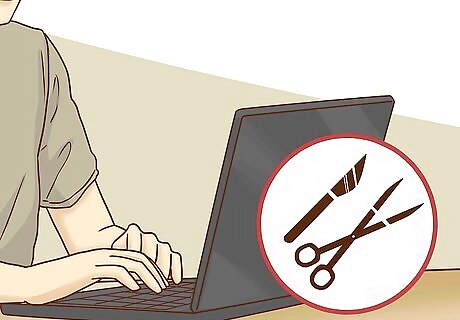
Educate yourself about why vets recommend C-sections. There are a variety of reasons why your veterinarian may recommend a C-section for your dog. Ultimately, unless you have a substantial amount of veterinary or breeding experience, you should make the decision to have a C-section in consultation with your vet. Your vet may recommend a C-section if: The size of the puppies may cause complications in a natural birth. The shape or size of the dog’s pelvis may result in complications. A puppy is positioned in a problematic way in the womb, which may result in complications. Your dog shows signs of fetal distress such red or green discharge, or signs that the placenta has detached.
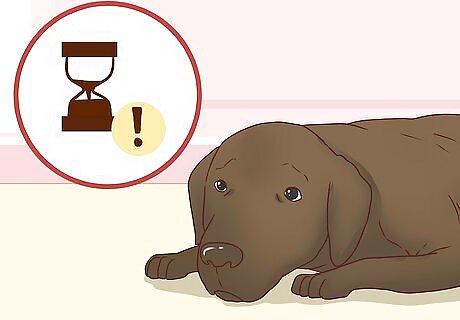
Get a C-section only under certain circumstances. When it comes to C-sections, timing is everything. This is because the health and well-being of the mother and the puppies depend on it. C-sections should not be performed before the overdue date. C-sections should wait until the dog goes into labor. C-sections should be performed after the dog’s temperature falls below 99 degrees and does not rise shortly after. There are many problems associated with a scheduled C-section that takes place before natural labor. Talk to your vet and evaluate the risks associated before opting for a scheduled C-section.
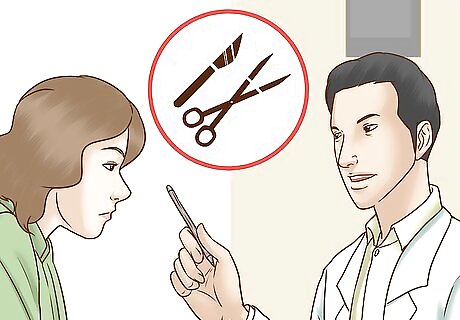
Familiarize yourself with the surgery. Take some time to learn about how the surgery will be performed. By knowing the different steps involved in the surgery, you’ll be able to come to an informed opinion about whether to get your dog a C-section. Your vet or the vet tech will shave your dog’s belly and wherever the anesthesia will be applied. After shaving, your vet or vet tech will apply anesthesia. Your vet will make an incision in the middle section of your dog’s belly, near the uterus. Your vet will remove the puppies. The vet and vet tech will stitch/suture the skin around the incision. Most C-sections take between 45 minutes to an hour and a half. This includes prep time.




















Comments
0 comment